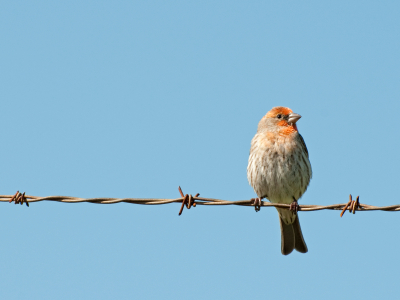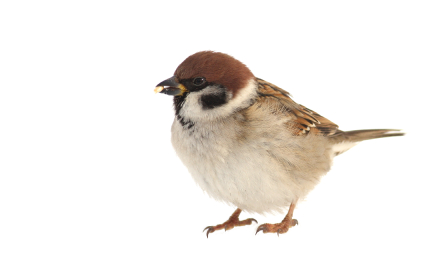
How to Identify Finches
While finches look different depending on their species, the most common type to infest homes has a distinctive appearance. Also called linnets, house finches have large beaks and flat heads, with a wingspan of about three inches and a length of around five and a half inches. While females are brown or gray, males have colorful plumage to attract mates. They have light red or orange markings on their chests, heads, and backs.

Finches in the Yard
Rarely entering homes, the house finch prefers building exteriors, choosing to nest on roof ledges or in eaves, rain gutters, and even hanging plants. Their small size makes them adaptive nesters, though it can also lead homeowners to confuse them with other common birds. For example, people often think finches look like house sparrows, which can be distinguished by their coloring. While female sparrows and house finches look similar, only male house finches have bright red markings.
Problems & Removal
Identifying finch populations correctly is vital because of their legal status. Of the common home-infesting birds, only sparrows, starlings, and pigeons are not protected by federal law. However, finches still cause issues that need to be addressed. These songbirds gather in flocks of 50 or more, creating loud, warbling calls and leaving behind droppings. Since their feces encourages dangerous fungi to grow in the soil, having large numbers of finches around can be dangerous. The pests also feed on fruits, grains, seeds, and buds in gardens. To identify and remove finches from yards, rely on the licensed professionals at Critter Control.
Finch Images
